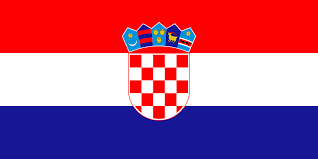Croatia is a state located in Southeast Europe. Part of the Balkans, it borders with Bosnia and Herzegovina to the southeast, Serbia to the east, Slovenia and Hungary to the north, and with Montenegro to the south, through a thin extended strip of land. With a population of some 4.3 million, a total area of 56,594 km2 and a coastline of 5,835 km (of which the mainland amounts to 1,777 km and the islands amount to 4,058 km), the country is wet to the west by the Adriatic Sea. Zagreb is the capital and largest city of the country (with some 687,000 inhabitants).
As part of Yugoslavia, Croatia was one of the wealthiest republics. However, ever since the declaration of independence of Croatia from the former Socialist Federal Republic of Yugoslavia, the armed conflicts that followed (over the period 1991-95), meant that the newly created state, missed out on the early waves of investment in Central and Eastern Europe, following the fall of the Berlin Wall (1989). With the economic infrastructure massively impacted, many sectors of the economy recorded a significantly reduced activity, including the predominant contributor to the Croatian GDP, i.e. the touristic sector. More specifically, from 1989 (2 years before the declared independence) to 1993, Croatia’s GDP fell by almost 40.5%. After the end of the war (1995), Croatian economy and mainly tourism, started to moderately recover. Significant structural problems, including corruption and a general lack of transparency, blocked any meaningful economic reforms, standing as an obstacle to attracting new foreign investments.
However, this situation was reversed in the 2000s. Led by a rebound in tourism and credit-driven consumer spending, the Croatian economy started to develop with fast and steady steps. Additionally, at the same period, inflation remained disciplined and the currency (kuna, HRK), stable. In the following years, the economy continued to expand, stimulated by a credit boom as a result of the newly privatized and foreign-capitalized banks, tourism sector growth, some capital investment and gains by small and medium-sized private companies. Additionally, the integration of Croatia in the Western political system and associated structured, signalled by the start of accession talks with the European Union in 2005 (Croatia actually joined the EU in 2013), and the prospect of NATO membership (eventually becoming a full member in 2009), further helped the national economy, through the reinforcement of investments in the country.
Despite the positive economic developments, today structural problems are still apparent, affecting significantly the economy of the Croatian Republic; these include a high public debt, a growing trade deficit, persistently high unemployment rates and an uneven regional development.
It is indicative that according to the Human Development Index (HDI) report, Croatia’s HDI value for 2014 was 0.818, positioning the country in 47th place out of 188 countries. This is lower than the EU average of 0.882 (for the same year), nevertheless, this score positions the country within the very high human development group, and substantially higher than other countries in the region (such as Serbia and Bulgaria).

